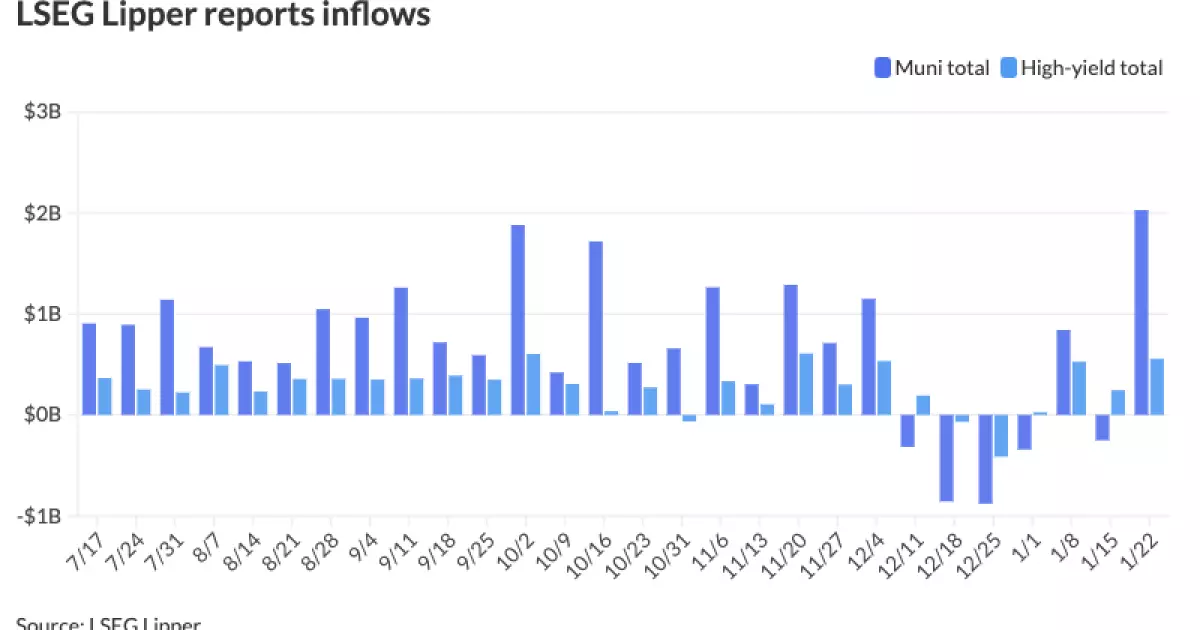The municipal bond market has recently experienced a phase of volatility that has sparked considerable interest among investors and market analysts alike. As the financial landscape evolves with shifting economic indicators and varied inflow patterns, understanding these nuances is crucial for making informed investment decisions. This article delves into the intricacies of recent municipal bond performances, mutual fund trends, and broader market movements, providing a comprehensive overview of current conditions.
Municipal bonds, often considered a safe haven for risk-averse investors seeking tax-exempt income, have shown some signs of stabilization, albeit amid a backdrop of weakening primary market activity. On a Thursday, while the broader municipal market faced pressure, notable inflows into municipal mutual funds surpassed $2 billion, indicating a resilient demand for these instruments despite the apparent slowdown. These funds have manifested their potential to absorb high-quality issuances, showcasing how investor appetite remains relatively undeterred.
Market analysts, including Kim Olsan of NewSquare Capital, have pointed out that despite substantial gross issuance in the primary markets and subdued redemption levels, the actual yield opportunities continue to draw substantial interest. This scenario is particularly intriguing as it reveals a disconnect between supply and demand fundamentals. Investors are leaning towards high-grade names, indicating a preference for quality securities over quantity, especially amid fluctuating economic conditions.
Examining the yield ratios across different maturities provides insights into market confidence. According to various metrics, the two-year and five-year municipal-to-U.S. Treasury ratios have remained stable around 64%, with the ten-year slightly higher at 66% and the thirty-year at 83%. Such ratios suggest not only the relative health of the municipal bond market but also depict an underlying optimism as buyers continue to engage actively with preferred offerings.
The presence of multiple high-grade issuances has created a favorable environment for investors. A unique situation arose when bonds from Washington state and Nevada General Obligations (GOs) attracted narrower spreads than usual, exhibiting robustness despite broader market concerns. This phenomenon may indicate a strong preference for certain issuers even amid heterogeneous market influences, leading to tighter spreads than typically observed.
In terms of investment-grade analysis, there is a distinct differentiation based on credit quality. While AAA-rated bonds, particularly general obligations, account for a significant percentage of transactions, the intrinsic value proposition offered by AA-rated and even single-A rated bonds is compelling. Recent trends show that even lower-rated bonds are experiencing firm demand, attributed to a tightening of bid conditions and a favorable risk-return profile.
As yields shift lower, the monthly performance metrics reveal that AAA and AA-rated bonds have outperformed their single-A and Baa-rated counterparts in recent trades. However, the latter categories still account for a noticeable volume of secondary transactions, emphasizing a broad base of investor engagement across quality levels. This scenario speaks to a deeper investor strategy, where opportunities are sought beyond just the highest grades, allowing for enhancement of returns in a low-yield environment.
The flows into municipal bond mutual funds have been noteworthy, as evidenced by the gain of over $2 billion during a week, marking the most substantial inflow since January 2023. Conversely, tax-exempt municipal money market funds experienced outflows, suggesting a recalibration of investor preferences towards higher-yielding opportunities. As yields fluctuate, the return dynamics of fixed-income investments reveal varying attractive points for investors—further accentuating the importance of an adaptive investment strategy.
The recent investment landscape underscores a shift of investor interest towards high-yield segments, with significant gains recorded in various lower-rated indices. This shift indicates a broader willingness to accept moderate risks for the pursuit of enhanced yields, reflecting an evolving investment fabric as economic strategies adapt to changing conditions.
The municipal bond market’s recent behavior reflects a complex interplay of demand, yield pressures, and evolving investor strategies. As participants navigate through a fluctuating environment characterized by changing inflows and diverse credit quality engagement, the resilient performance of high-grade issuances stands out as a beacon of stability. Investors must remain vigilant, armed with insights from recent trends, to optimize their strategies and adapt to an ever-evolving market landscape. In this dynamic atmosphere, the interplay between supply, demand, and investor sentiment will continue to shape the future of municipal bonds and the broader economic environment.


Leave a Reply